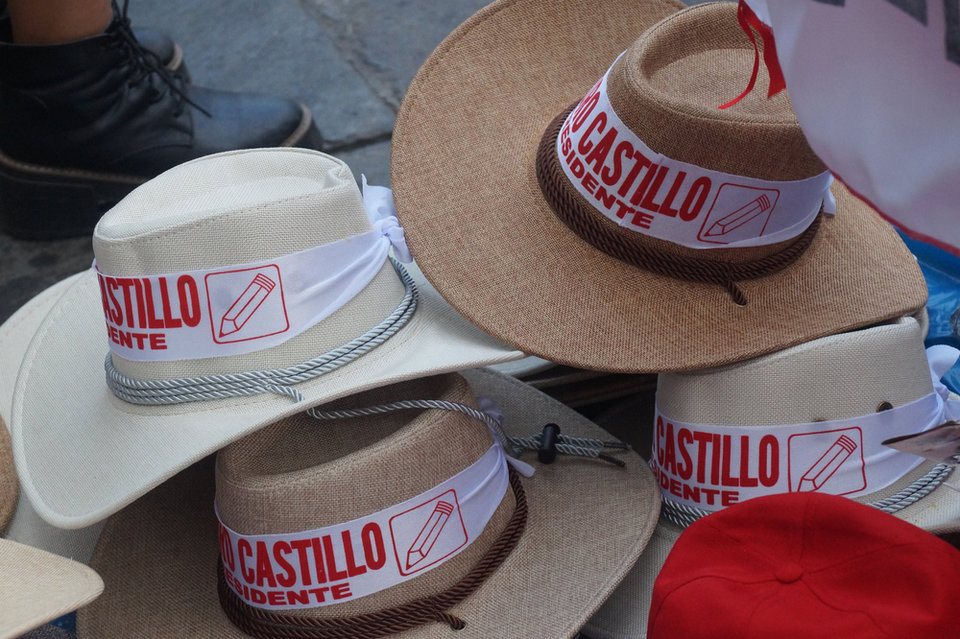
Q&A
Mining in Peru: an opportunity for social profitability
Zachary Skidmore speaks with Victor Gobitz, president of the Peruvian Institute of Mining Engineers, about the current state of the Peruvian mining sector and how the election of Pedro Castillo to the office of president will impact mining interests within the country.
T
he election of Pedro Castillo, a rural school teacher from the Marxist party, to the presidency of Peru has led to questions over whether he will do good on his campaign promise to “recover sovereignty over all our natural resources”.
Victor Gobitz, president of the Peruvian Institute of Mining Engineers, argues that due to his precarious political position with a divided congress, he must ensure that any changes to the current system are done in conjunction with miners, to ensure a balanced and fair system that allows for financial freedom but also promotes social profitability for all in Peru.
//Victor Gobitz, President of the Peruvian Institute of Mining Engineers.
Credit: Peruvian Institute of Mining Engineers
Zachary Skidmore: The IMF has emphasised the importance of the mining sector’s role in both short-term recovery and long-term macroeconomic stability. For Peru, which was the worst affected country regionally by Covid and how best can the mining sector contribute to sustainable growth within Peru?
Víctor Gobitz: In general terms, the mining sector’s activities are mostly in the highlands (remote areas), not in urban areas. In these remote areas, we were able to implement many robust sanitary protocols in order to tackle the pandemic. That allowed us to re-establish our level of production before the pandemic. In addition, the mining industry has helped the national health system in increasing their capabilities.
How has the lack of political continuity/stability impacted the mining sector in Peru?
We have been facing many difficulties because our institutional organisation, in this case the political parties, is very weak. There is not enough maturity to deal with these types of scenarios. But we must recognise that from a macroeconomic point of view, and from a production point of view, the executive branch has a robust system now.
The central bank and the Ministry of Economy and Finance, the Ministry of Energy and Mines as well, has been very robust and mature in comparison to institutions.
But instability creates uncertainties. Let me put this in context: the new government was elected after a runoff in a very tight outcome. Before that, we elected a new Congress, where approximately two thirds of their members are in favour of an open economy, promoting private investment.
In the coming three weeks, the Prime Minister and his entire cabinet must present their executive plan before Congress to obtain a vote of confidence or reaction. We must wait until these events to clearly understand the balance between the executive branch and congress.

// 3D System Model and Completed Installation. Credit: Deimos
Castillo’s close relationship with the rural populace and unions assisted in lifting the protest that was active for 11 days against mining company Las Bambas. Will Castillo’s close relationship and apparent sway over these workers help or hinder the productivity of the mining sector?
As you know, mining activity is located in the highlands, 4,000m above sea level, and we have to export this production model. So, we are required to develop a logistic to the cost. So, in many cases, we have a pipeline by land to transport the concentrate.
In the case of Las Bambas, which is in the southern part of Peru and not in the highlands, initially the project was designed with a pipeline but they decided to change and right now they transport all the concentrates through a specific road. That creates some tough relationships with rural communities, because the number of trucks is very significant.
So, in the long term, we require better infrastructure in order to increase our production, due to the range of copper projects open across the country.
In that sense, as a country, we must openly discuss how to share infrastructure; one for northern Peru in order to transport copper concentrates to the coast and also, another one in the south of Peru.
That's a key discussion in order to properly develop our potential in terms of copper products; otherwise, will we see some difficulties like we are experiencing at Las Bambas. So, the final solution is to design and to invest in a pipeline that is cost effective and is better for the communities.
// Main image: 3D System Model and Completed Installation. Credit: Deimos
Multiple large-scale projects remain undeveloped, stuck in a quagmire of permitting complications and community conflicts. Do you feel that Castillo’s rise to power will help or hinder these projects from getting off the ground?
In the case of mining activity, Castillo and his party have significant experience and a close relationship with many rural communities. If they properly approach the subject, properly defined, the very way to sustainably develop our country, we could create a perfect environment to develop our copper products. So, it is a matter of dialogue.
// Main image: 3D System Model and Completed Installation. Credit: Deimos
They must open this communication line in order to discuss with maturity, regarding how we are expecting to fund our development. The answer is promoting sustainable and responsible mining activity. As a country and as an industry, we have a portfolio with these attributes.
How has the Peruvian mining industry pushed and implemented a sustainable model of mining?
In Peru, we have a long mining tradition over the last two or three decades. We have received US foreign investment. And we have established our very good standards in terms of environmental merits and social merits. So specifically, the new Ministry of Energy and Mines has called for social profitability, which is a means to promote mining investment, as well as the local economy.
This is as well as maintaining high standards, environmental social topics, and maintaining cultural heritage. But to be honest, many, many companies are applying this concept, probably with different terminology. So we are now aware that that's possible.
We face some difficulties in terms of corruption and the lack of a long term plan to reduce the gap between rural and coastal areas. We have seen in the last two decades that the lack of public investment, without any intention or clear objective to reduce the social gap, has led people to not see any positive impact of our mining.
// Main image: Lima, Peru - June 12, 2021: Supporters of presidential candidate Pedro Castillo, demonstrate outside the National Jury of Elections, waiting for final results.
Credit: Joseph Moreno M / Shutterstock.com